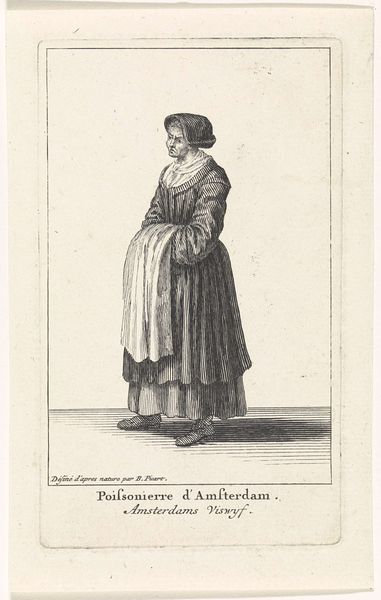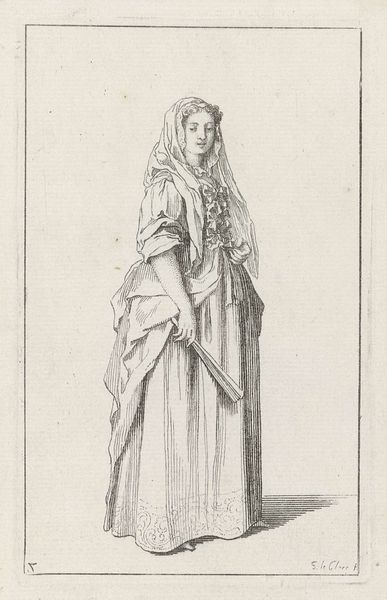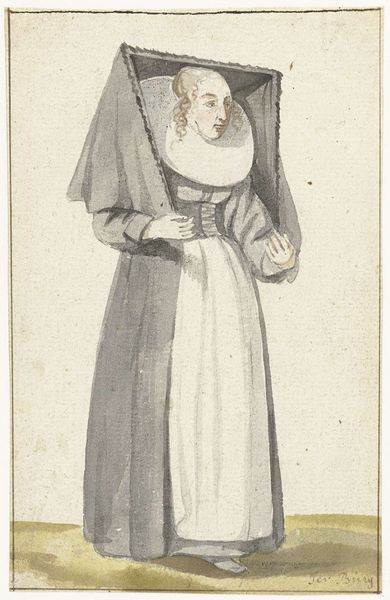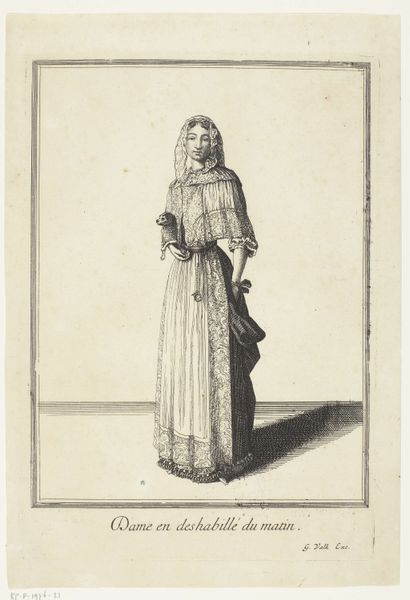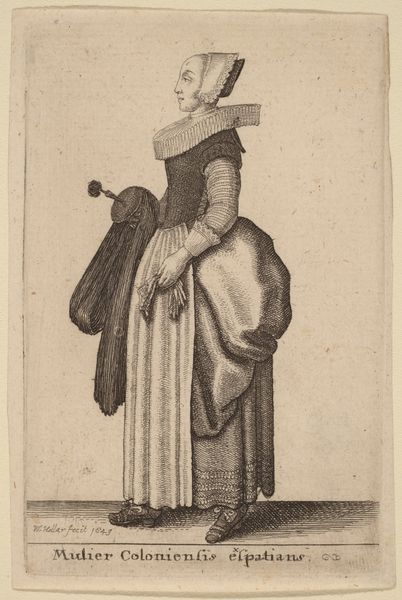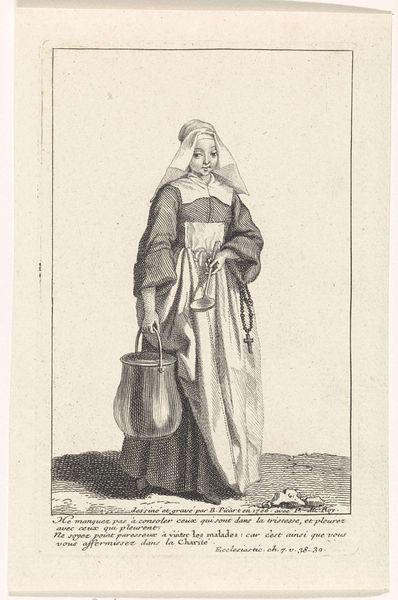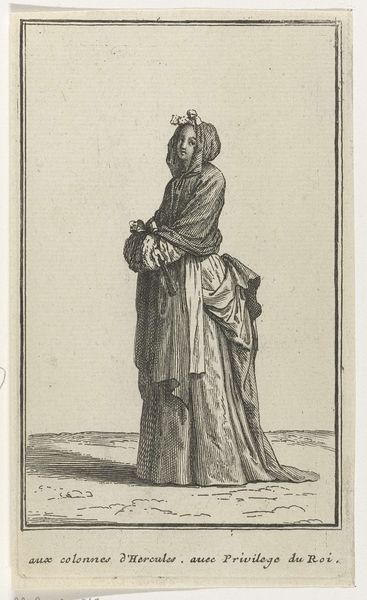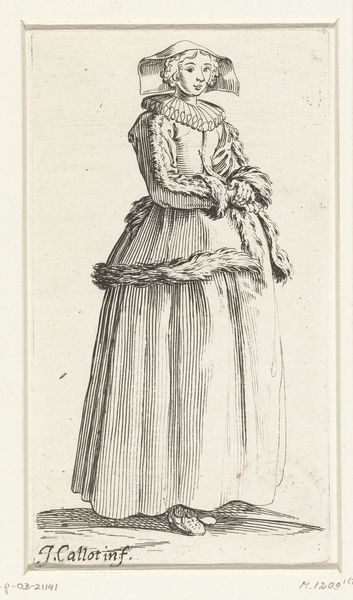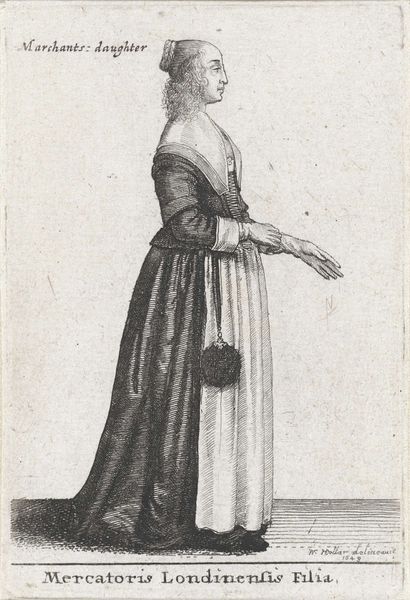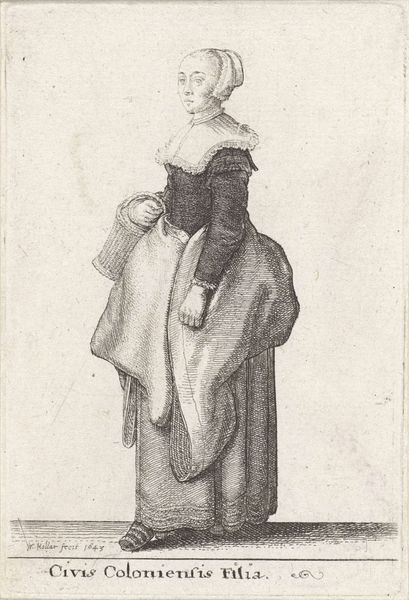
print, engraving
#
baroque
# print
#
figuration
#
history-painting
#
engraving
Dimensions: height 111 mm, width 68 mm
Copyright: Rijks Museum: Open Domain
Curator: This engaging piece before us, created in 1704 by Bernard Picart, is an engraving called "Non in eigentijds kostuum," currently held in the Rijksmuseum. Editor: The most immediate impression is one of quiet dignity. There's a somberness in her stance and expression, an understated gravitas in the fall of the fabrics around her. Curator: Yes, the textures achieved through the engraving process give weight to the drapery. This work speaks to the political and social role costume played. The title itself, suggesting "not in contemporary dress," begs the question: Why represent a figure this way in 1704? Editor: Perhaps a deliberate evocation of the past to comment on the present? It seems to harken back to an older, possibly more virtuous era, casting a critical gaze on the fashion-obsessed court of the time. Or is she from a historical painting perhaps? The quotation underneath suggests it. Curator: The inscription includes text from I Corinthians, Chapter 13, underscoring a familiar theme that is more charitable than science or faith in some instances: Charity triumphs. Picart uses figuration as an exercise in moral and ethical judgment. What cultural memories is he invoking with that deliberate lack of "eigentijds kostuum"? Editor: And the symbols become all the more potent because of the simplicity of the composition, don't they? Her slightly averted gaze adds to that sense of pensive introspection. There's no elaborate backdrop or supporting narrative; just the woman and her clothing as powerful cultural statements. Curator: Indeed, and as an iconographer, that’s precisely what fascinates me – the visual weight carried by even seemingly simple elements when strategically deployed across cultural history. A simple hood shape may speak to whole narratives for example! Editor: I hadn't considered it, but analyzing art and how social memory imprints on it is central to any art-historical interpretation. Seeing these artifacts is a valuable window into cultural values that shift, get rewritten, and resurface. Curator: Ultimately it reflects the power of historical reflection as well as a visual touchstone. Editor: A powerful reflection on what the present may have borrowed from the past, whether in dress or principles.
Comments
No comments
Be the first to comment and join the conversation on the ultimate creative platform.

